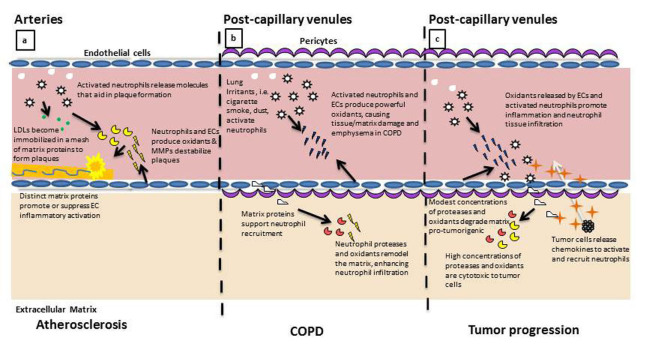Figure 1.
Neutrophil response to ECM proteins regulates their activity in multiple disease states. a. In the arterial development and progression of atherosclerosis, the activated neutrophil and inflamed EC produce and express proteins that contribute to the formation of the lipid plaque. Accumulation of matrix proteins, including fibrin and collagen, contribute to the immobilization and stabilization of the lipid plaque. Neutrophils and ECs subsequently release proteases and oxidants that destabilize the architecture of the plaque, inducing plaque rupture and immobilization. b. In the post-capillary venule of the lung, neutrophil and EC activation can result in the production of oxidants that damage the surrounding tissue matrix. As neutrophils enter into the remodeled matrix, they continue the process of protease release and continue to remodel the microenvironment, facilitating localized inflammation and irritation, symptomatic of COPD. c. Inflammation in the post-capillary venule contributes to the progression of tumor metastasis. Microvascular EC are activated by tumor-released chemokines to induce neutrophil adhesion and tissue infiltration. Neutrophils release oxidants and proteases that remodel the microenvironment, aiding in tumor cell recruitment to pre-metastatic tissues.

